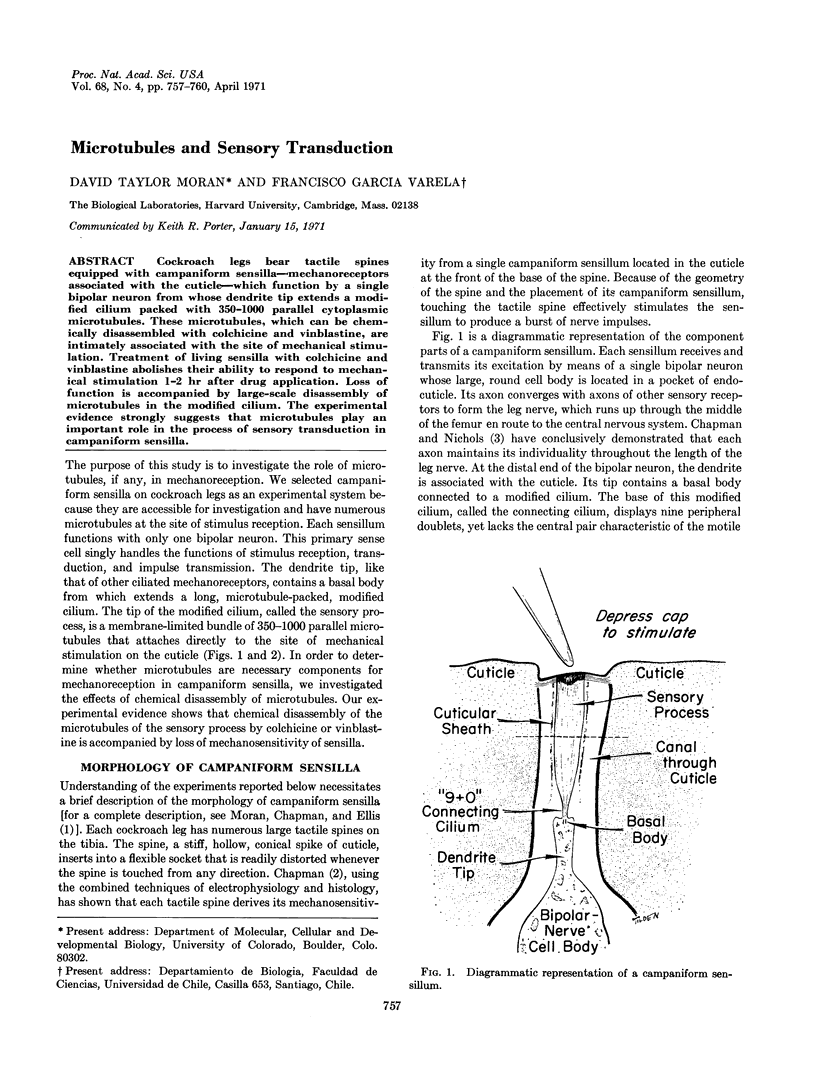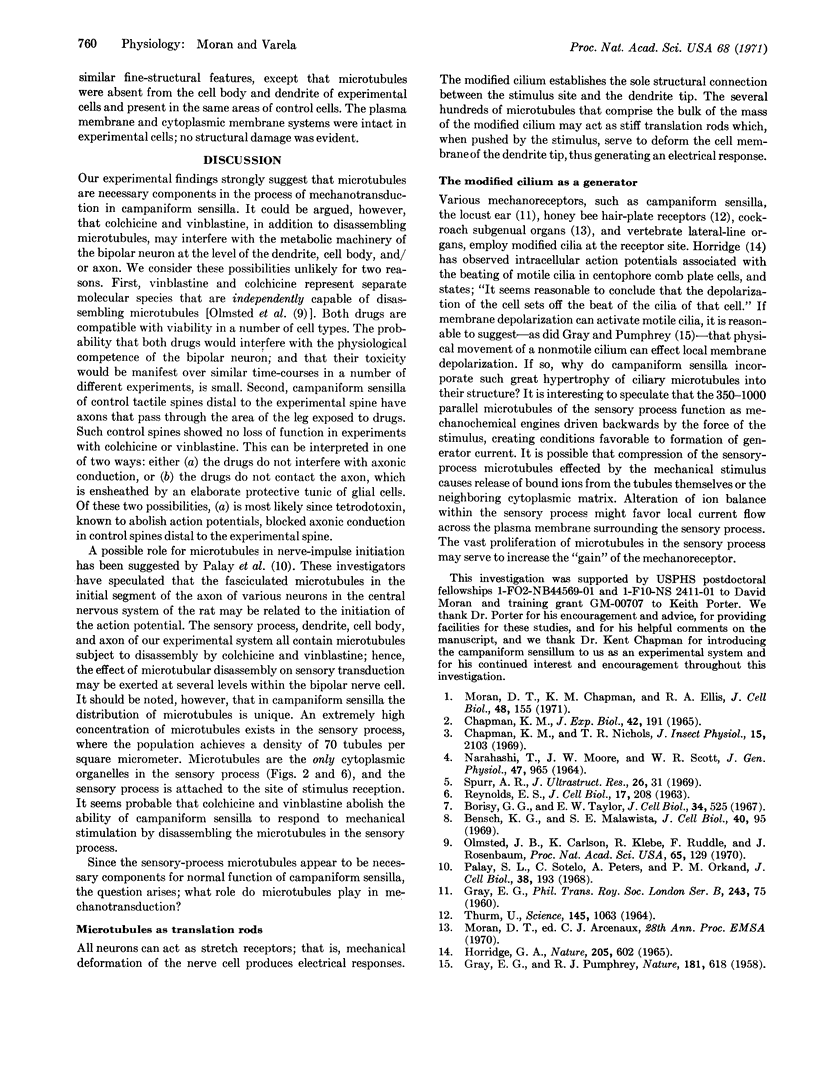Abstract
Cockroach legs bear tactile spines equipped with campaniform sensilla—mechanoreceptors associated with the cuticle—which function by a single bipolar neuron from whose dendrite tip extends a modified cilium packed with 350-1000 parallel cytoplasmic microtubules. These microtubules, which can be chemically disassembled with colchicine and vinblastine, are intimately associated with the site of mechanical stimulation. Treatment of living sensilla with colchicine and vinblastine abolishes their ability to respond to mechanical stimulation 1-2 hr after drug application. Loss of function is accompanied by large-scale disassembly of microtubules in the modified cilium. The experimental evidence strongly suggests that microtubules play an important role in the process of sensory transduction in campaniform sensilla.
Full text
PDF



Images in this article
Selected References
These references are in PubMed. This may not be the complete list of references from this article.
- Bensch K. G., Malawista S. E. Microtubular crystals in mammalian cells. J Cell Biol. 1969 Jan;40(1):95–107. doi: 10.1083/jcb.40.1.95. [DOI] [PMC free article] [PubMed] [Google Scholar]
- Borisy G. G., Taylor E. W. The mechanism of action of colchicine. Binding of colchincine-3H to cellular protein. J Cell Biol. 1967 Aug;34(2):525–533. doi: 10.1083/jcb.34.2.525. [DOI] [PMC free article] [PubMed] [Google Scholar]
- CHAPMAN K. M. CAMPANIFORM SENSILLA ON THE TACTILE SPINES OF THE LEGS OF THE COCKROACH. J Exp Biol. 1965 Apr;42:191–203. doi: 10.1242/jeb.42.2.191. [DOI] [PubMed] [Google Scholar]
- Chapman K. M., Nichols T. R. Electrophysiological demonstration that cockroach tibial tactile spines have separate sensory axons. J Insect Physiol. 1969 Nov;15(11):2103–2115. doi: 10.1016/0022-1910(69)90077-8. [DOI] [PubMed] [Google Scholar]
- GRAY E. G., PUMPHREY R. J. Ultrastructure of the insect ear. Nature. 1958 Mar 1;181(4609):618–618. doi: 10.1038/181618a0. [DOI] [PubMed] [Google Scholar]
- Moran D. T., Chapman K. M., Ellis R. A. The fine structure of cockroach campaniform sensilla. J Cell Biol. 1971 Jan;48(1):155–173. doi: 10.1083/jcb.48.1.155. [DOI] [PMC free article] [PubMed] [Google Scholar]
- NARAHASHI T., MOORE J. W., SCOTT W. R. TETRODOTOXIN BLOCKAGE OF SODIUM CONDUCTANCE INCREASE IN LOBSTER GIANT AXONS. J Gen Physiol. 1964 May;47:965–974. doi: 10.1085/jgp.47.5.965. [DOI] [PMC free article] [PubMed] [Google Scholar]
- Olmsted J. B., Carlson K., Klebe R., Ruddle F., Rosenbaum J. Isolation of microtubule protein from cultured mouse neuroblastoma cells. Proc Natl Acad Sci U S A. 1970 Jan;65(1):129–136. doi: 10.1073/pnas.65.1.129. [DOI] [PMC free article] [PubMed] [Google Scholar]
- Palay S. L., Sotelo C., Peters A., Orkand P. M. The axon hillock and the initial segment. J Cell Biol. 1968 Jul;38(1):193–201. doi: 10.1083/jcb.38.1.193. [DOI] [PMC free article] [PubMed] [Google Scholar]
- Spurr A. R. A low-viscosity epoxy resin embedding medium for electron microscopy. J Ultrastruct Res. 1969 Jan;26(1):31–43. doi: 10.1016/s0022-5320(69)90033-1. [DOI] [PubMed] [Google Scholar]
- THURM U. MECHANORECEPTORS IN THE CUTICLE OF THE HONEY BEE: FINE STRUCTURE AND STIMULUS MECHANISM. Science. 1964 Sep 4;145(3636):1063–1065. doi: 10.1126/science.145.3636.1063. [DOI] [PubMed] [Google Scholar]








